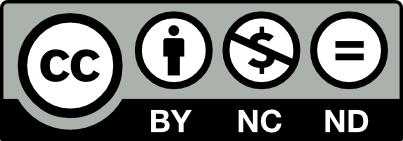This page is licensed under Creative Commons under Attribution 4.0 International. Anyone can share content from this page, with attribution and link to College MatchPoint requested.
Reach for the Stars, But Don't Forget the Ground: The Pitfalls of Overloading on Reach Schools
In today’s competitive college admissions landscape, students often feel pressured to apply to prestigious universities, aiming for the "reach" schools that offer an elite reputation. These are the institutions where a student’s chances of admission are relatively low, even for highly qualified candidates. While ambition is essential, building a college list with too many reach schools can backfire. Here's why focusing on an excessive number of reach schools could negatively impact your college journey and how a balanced approach is more beneficial.

Quantity Over Quality: The Application Dilemma
Filling your college list with reach schools might seem like a bold strategy, but it often leads to one significant problem: quantity over quality. Crafting an application that truly reflects who you are, your accomplishments, and why you are a fit for a particular school takes time. When a student applies to too many competitive schools, the quality of each individual application may suffer. Rather than carefully customizing essays, students may submit generic responses that don’t stand out in an already crowded pool of applicants. Top universities expect you to show why you're a great fit for them specifically, and a one-size-fits-all approach won’t get the job done.
Instead, focusing on fewer schools and dedicating time to creating thoughtful, tailored applications will make a stronger impact. Admissions committees can quickly spot applications that lack genuine effort, and a weak application can harm your chances even more than not applying at all.
Neglecting Better Matches
By fixating on reach schools, students can overlook institutions that might be a better fit for their academic interests, personal growth, and career aspirations. These "target" or "match" schools, where your qualifications align closely with the school’s average admitted student profile, often provide just as many opportunities for academic and personal development as more prestigious schools. The difference? You’re more likely to be admitted and can find a college experience that is a great match for your goals.
Target schools often have robust academic programs, access to internships, and unique campus communities. By bypassing these options, students miss the opportunity to explore colleges that could be the perfect fit for their long-term success.
The Emotional Toll
Overloading on reach schools can also take an emotional toll. With many top universities accepting only a small percentage of applicants, even the most academically accomplished students are likely to face multiple rejections. A rejection-heavy decision season can be crushing to morale, especially when students haven't considered enough schools where admission is more likely. Maintaining self-confidence and perspective is key during the college process, and a balanced list that includes schools where acceptance is likely can help ease the emotional rollercoaster.
Lack of a Safety Net
Another significant risk of focusing heavily on reach schools is the potential to end up without any acceptances at all. If a student’s list is dominated by schools with very low admission rates, they could find themselves scrambling in the spring for alternative options or even considering an unplanned gap year. A well-rounded college list that includes target and safety schools offers much-needed peace of mind, ensuring that students will have multiple viable options to consider once decision season rolls around.
Missing Out on Early Decision Opportunities
Many colleges offer Early Decision (ED) programs, which can significantly increase a student’s chances of admission. ED is a binding agreement that shows a school that it’s your top choice, and some universities fill a large portion of their freshman class this way. However, students can typically only apply ED to one school. If a student is focused on a long list of reach schools, they may miss the chance to use this strategy at a school where they are competitive. Applying ED to a well-researched target school could greatly improve your chances of acceptance while still offering a strong academic experience.
The Importance of a Balanced Approach
The best strategy for the college application process is balance. A college list should include a healthy mix of reach, target, and safety schools to maximize opportunities and ensure a positive outcome. A balanced approach allows students to:
- Spend more time on each application, crafting thoughtful, personalized responses.
- Explore a variety of schools, expanding the possibilities for finding the best academic, social, and financial fit.
- Increase the chances of multiple acceptances, providing more choices come decision time.
- Minimize stress, leading to a more enjoyable application process and decision season.
- Make informed decisions, rooted in thorough research and reflection on what truly matters to them in a college experience.
Reaching for the stars is an important part of the college journey, but keeping your feet on the ground is just as vital. By balancing your college list and focusing on quality applications to schools that fit your profile and interests, you can increase your chances of finding the perfect place to thrive—without sacrificing your time, money, or emotional well-being. Aim high, but remember: success comes from smart planning, not just ambition.


